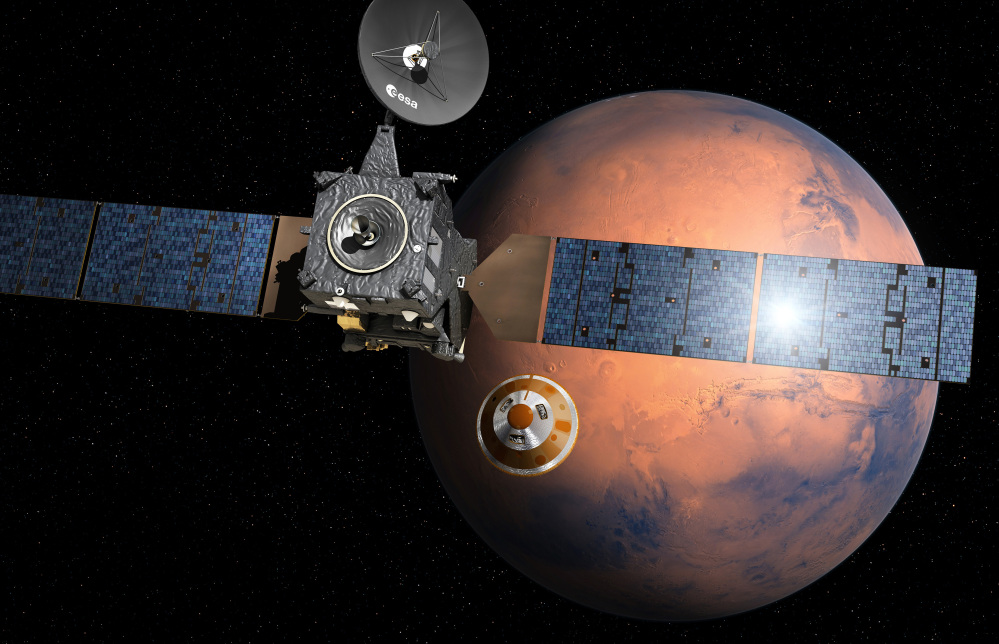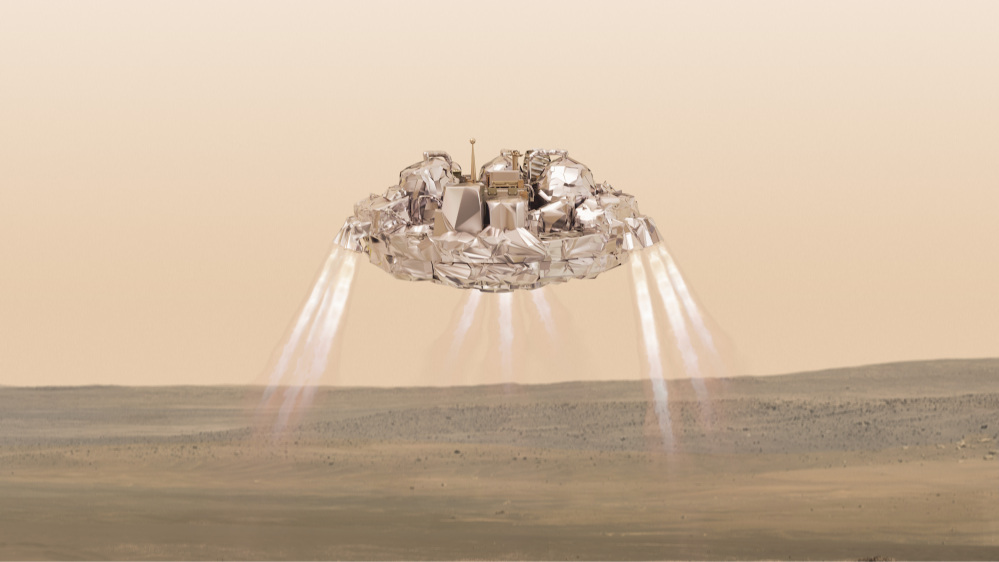DARMSTADT, Germany — The European Space Agency lost contact with an experimental Mars probe shortly before its planned landing on the red planet Wednesday. Scientists said that wasn’t a good sign for the Schiaparelli lander, but it was too soon to give up on the craft.
ESA successfully put Schiaparelli’s mother ship, which will analyze the Martian atmosphere, into orbit. But several hours after the lander was supposed to have touched down at 1448 GMT, there was no firm word on its fate.
“The signal (from Schiaparelli) went through the majority of the descent phase but it stopped at a certain point that we reckon was before the landing,” Paolo Ferri, ESA’s head of operations, said at mission control in Darmstadt, Germany.
“To conclude more on this … we need more information,” he said.
An update is expected Thursday.
Schiaparelli was meant to test technology for a future European robotic mission to Mars. It is part of a larger international mission called ExoMars that will help in the hunt for life on the planet.
Schiaparelli was released from the mother ship, the Trace Gas Orbiter, on Sunday. Scientists said the gentle approach would turn into a six-minute hell ride when the probe plunged into the hot, dusty Martian atmosphere and hurtled toward the surface at 13,050 mph.
The plan was for Schiaparelli to deploy a parachute and then thrusters to slow down to 6.2 mph before hitting the surface.
Landing a spacecraft on Mars is notoriously difficult and several past missions have failed, including the ESA’s previous attempt in 2003 with the rover Beagle 2. It made it to Mars but its solar panels didn’t unfold properly, preventing it from communicating.
While Schiaparelli has some scientific instruments on board, its main purpose was to rehearse the landing and test technology for a European rover mission to Mars in 2020. NASA has successfully placed several robotic vehicles on the planet, including the Opportunity and Curiosity rovers.
The ExoMars program, which comprises the current and 2020 mission, is ESA’s first interplanetary mission jointly undertaken with the Russian space agency Roscosmos.
Schiaparelli took off for Mars in March aboard a Russian rocket together with the Trace Gas Orbiter. The orbiter, which also has NASA-made instruments on board, will act as a radio relay for future missions from the surface of Mars, as well as analyze methane and other gases in the atmosphere.
Send questions/comments to the editors.




Success. Please wait for the page to reload. If the page does not reload within 5 seconds, please refresh the page.
Enter your email and password to access comments.
Hi, to comment on stories you must . This profile is in addition to your subscription and website login.
Already have a commenting profile? .
Invalid username/password.
Please check your email to confirm and complete your registration.
Only subscribers are eligible to post comments. Please subscribe or login first for digital access. Here’s why.
Use the form below to reset your password. When you've submitted your account email, we will send an email with a reset code.